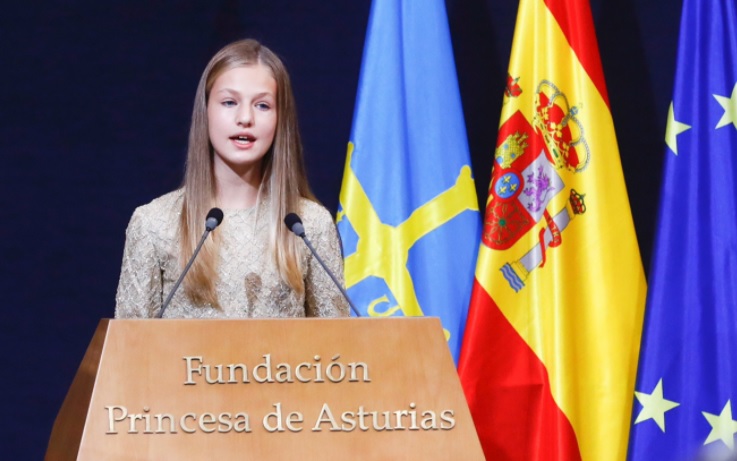
The Spanish heir to the throne is always given a special title, Prince or Princess of Asturias, to denote their place as first in line to the throne. It is a title that dates back to the late 1300s and has continued to this day.
Princess Leonor became the Princess of Asturias on 19 June 2014 following the abdication of her grandfather, Juan Carlos, and the accession of her father, Felipe. In her limited official duties, she accompanies her parents on major royal events and presides over the Princess of Asturias Foundation and the Princess de Girona Foundation, which both host annual awards ceremonies.
There are other titles as well that are unique to the heir: Princess of Girona, Princess of Viana, Duchess of Montblanc, Countess of Cervera and Lady of Balaguer. In the case of a male heir, these are all modified to male identifiers.
The titles Princess of Girona and Princess of Viana are to represent that Leonor is the heir of the kingdoms of Aragon and Navarre, respectively. Duchess of Montblanc represents that she is the heir of the principality of Catalina; Countess of Cervera represents that she is the heir to the kingdom of Valencia; and Lady of Balaguer signifies that she is the heir to the kingdom of Mallorca.
The first Prince of Asturias was Henry III of Castille, who was granted the title by his father, John I of Castile. Henry was also given jurisdiction of Asturias as well. The title was chosen as it was the largest area of land that the king could give that had not already been granted; and it also provided the heir with a revenue stream to supplement his income until he came to the throne.
When the kingdoms of Aragon and Castille were united, it was determined that the heir would continue to use the title Prince of Asturias. After the Bourbons took over the Spanish throne in the 1700s, they decided to continue using this title as well.
When the Spanish monarchy was restored in 1975, it was decided that the heir to the throne would use the title, dormant since the fall of the monarchy in the 1930s though used by the Spanish heirs ‘in pretense.’ In 1977, a royal decree was issued stating that the then Prince Felipe would go by the title Prince of Asturias. In the 1978 Spanish Constitution, this was formalised.
The Constitution stated that, “The heir apparent or presumptive, from birth or event that makes him such, will have the dignity of Prince of Asturias and other titles traditionally linked to the successor of the Crown of Spain.”
When Princess Leonor reaches her majority in 2023, she will be expected to take an oath vowing to faithfully carry out royal duties, enforce the Constitution and its laws, pledge her allegiance to the monarch, and respect the rights of Spanish citizens and those living in autonomous communities.

